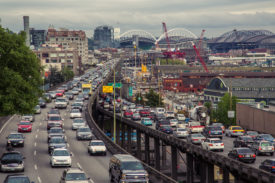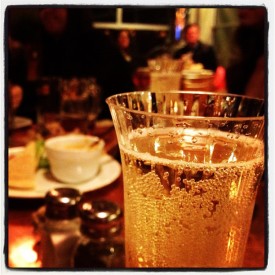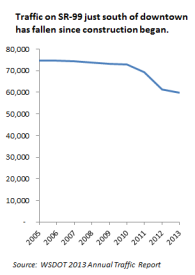A draft of a paper (MSWord link, 4.6 M) just crossed my desk, and I thought it deserved a bit of visibility. It’s by Tom Byers of the Cedar River Group, who’s got a smart, homespun way of thinking about the recent controversy surrounding Seattle’s Alaskan Way Viaduct:
When I was a kid, my grandfather used to tell me, by way of giving me the wits to find my way in the forests of the Smoky Mountains, that if I found myself smack between climbing a steep cliff and fording a creek full of water moccasins, I ought to consider stepping back to find a better way to get home….
So here we are [on the Viaduct issue], in deep woods, trapped between certain ugliness [a rebuilt aerial highway] and uncertain costs [the tunnel]…
One of the good things I learned, on those occasions when I actually followed my grandfather’s advice, is that it helps to define the problem correctly. For example, my challenge as a kid in the woods was neither climbing the cliff, nor crossing the stream. It was finding a safe way home. Once I had realized that was the problem, I could see things in a new way. I’d find clues I should have seen before, sometimes even a smooth and easy trail that had just been hidden by a fallen tree.
Tom’s point, of course, is that when none of the officially sanctioned policy options look good, it’s time for some fresh and creative thinking about the problem. And he’s got some very specific ideas about a third way on the Viaduct—concentrating on moving people and freight, rather than cars. It’s worth a read.








Alan Durning
I agree, Clark. It’s a paper that asks the key questions and proposes sensible and workable alternatives to rebuilding Seattle’s second downtown freeway.I encourage others to read this short paper.
Matt the Engineer
Yes, it’s very well written. I think he’s convinced me on the boulevard concept. And I’m definately convinced of BRT concept if light rail isn’t immediately feasible. I know, nobody’s mentioned light rail, and with the Monorail fiasco being such a recent wound nobody likely will for a while. One thing I like about BRT is that it has the potential of setting up bus-only paths that can later be converted to light rail.